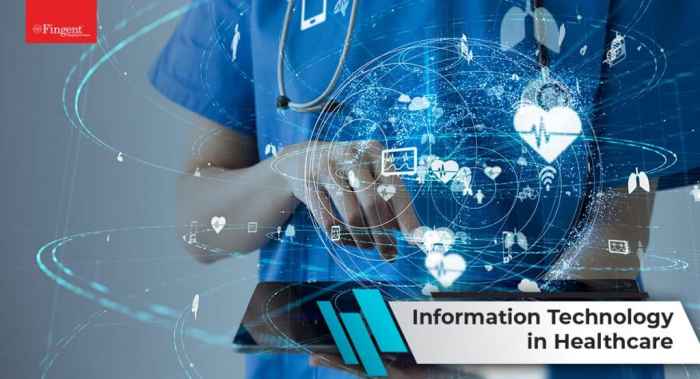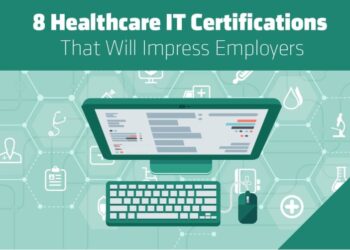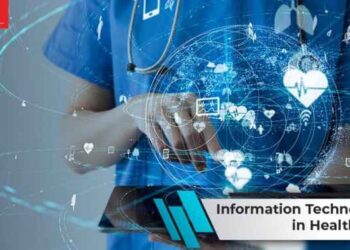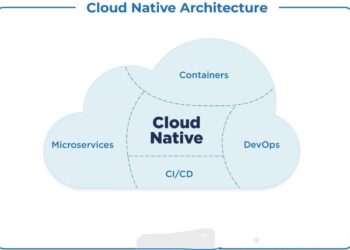Exploring the impact of Health Information Technology on patient care outcomes delves into a realm of innovation and transformation. This article aims to shed light on the crucial role technology plays in enhancing healthcare delivery systems and ultimately improving the well-being of patients.
As we navigate through the intricate web of Electronic Health Records, Telemedicine, and Data Analytics, we uncover the remarkable ways in which technology is reshaping the landscape of patient care.
The Role of Health Information Technology in Patient Care
Health Information Technology (HIT) plays a crucial role in improving patient care outcomes by enhancing communication, streamlining processes, and providing healthcare professionals with real-time access to critical patient data.
Specific Technologies for Improving Patient Care
- Electronic Health Records (EHRs): EHRs allow healthcare providers to access patient information instantly, leading to more coordinated and efficient care.
- Telemedicine: Telemedicine enables remote consultations, monitoring, and diagnosis, expanding access to healthcare services for patients in remote areas.
- Health Information Exchange (HIE): HIE facilitates the sharing of patient information between different healthcare organizations, ensuring continuity of care and reducing duplication of tests.
Importance of Integrating Technology into Healthcare Delivery Systems
Integrating technology into healthcare delivery systems is essential for improving patient outcomes, increasing efficiency, and reducing medical errors. By leveraging HIT, healthcare providers can deliver more personalized care, engage patients in their own health management, and ultimately enhance the overall quality of care provided.
Electronic Health Records (EHR) and Patient Care

Electronic Health Records (EHR) play a crucial role in enhancing patient care coordination by providing healthcare providers with instant access to a patient's medical history, treatment plans, test results, and other essential information. This seamless flow of information allows for better communication and collaboration among healthcare teams, leading to more efficient and comprehensive care for patients.
Benefits of EHR in Improving Accuracy and Efficiency in Healthcare
- Improved Accuracy: EHR systems reduce the risk of errors associated with manual record-keeping, such as illegible handwriting or misplaced documents. This leads to more accurate diagnoses and treatment plans.
- Efficiency Gains: With EHR, healthcare providers can quickly retrieve patient information, streamline administrative tasks, and automate processes like prescription refills, appointment scheduling, and billing. This efficiency allows providers to focus more on patient care.
- Enhanced Communication: EHR systems facilitate communication among different healthcare providers involved in a patient's care, ensuring that everyone is on the same page regarding diagnosis, treatment plans, and follow-up care.
Real-Life Scenarios of Positive Impact of EHR Systems on Patient Care
- In emergency situations, EHR systems enable healthcare providers to access critical patient information promptly, even if the patient is unable to communicate. This quick access to medical history and allergies can be life-saving.
- EHR systems help prevent medication errors by providing alerts for potential drug interactions, allergies, and dosing instructions. This ensures that patients receive the correct medications at the right time.
- Remote monitoring and telehealth services are made more effective with EHR systems, allowing healthcare providers to track patient progress, adjust treatment plans, and provide timely interventions, especially for patients with chronic conditions.
Telemedicine and Virtual Care

Telemedicine plays a crucial role in providing remote patient care, especially in situations where physical access to healthcare facilities is limited. It involves the use of technology to deliver healthcare services remotely, bridging the gap between patients and healthcare providers.
Comparing Traditional In-person Care with Virtual Care
- Traditional in-person care requires patients to visit healthcare facilities physically, while virtual care allows patients to consult healthcare providers from the comfort of their homes.
- Virtual care eliminates the need for travel and reduces waiting times, making healthcare more convenient and accessible for patients.
- While traditional care offers face-to-face interactions, virtual care provides a platform for secure communication through video calls or messaging.
Advantages and Challenges of Implementing Telemedicine for Patient Care
-
Advantages:
Telemedicine increases access to healthcare services, especially for individuals in rural or underserved areas. It also reduces healthcare costs by minimizing the need for in-person visits and hospitalizations.
-
Challenges:
Some challenges of implementing telemedicine include ensuring patient privacy and data security, as well as addressing technological barriers for patients who may not have access to the necessary devices or internet connectivity.
-
Advantages:
Telemedicine can improve patient outcomes by facilitating regular monitoring and follow-ups, enhancing medication adherence, and enabling timely interventions for chronic conditions.
Data Analytics and Patient Outcomes
Data analytics play a crucial role in improving patient outcomes by allowing healthcare organizations to analyze vast amounts of data to identify trends, patterns, and insights that can lead to better decision-making and ultimately enhance patient care quality.
Utilizing Data Analytics for Patient Care Improvement
- Healthcare organizations use data analytics to track patient progress and outcomes, allowing for personalized treatment plans based on individual needs.
- By analyzing data from electronic health records (EHR) and other sources, healthcare providers can identify high-risk patients and intervene early to prevent complications.
- Data analytics also help in predicting healthcare trends and optimizing resource allocation to ensure timely and efficient patient care.
Significance of Data-Driven Decision-Making
-
Data analytics enable healthcare providers to make informed decisions based on evidence and insights derived from data analysis, leading to better patient care outcomes.
- By leveraging data-driven decision-making, healthcare organizations can improve treatment protocols, reduce medical errors, and enhance overall patient satisfaction.
- Healthcare professionals can also use data analytics to monitor the effectiveness of interventions and adjust treatment plans accordingly to ensure the best possible outcomes for patients.
Last Recap
In conclusion, the integration of Health Information Technology has revolutionized the way healthcare is delivered, promising a future where patient care is more efficient, accurate, and personalized. By harnessing the power of technology, we pave the way for a healthier tomorrow.
Detailed FAQs
How does Health Information Technology improve patient care outcomes?
Health Information Technology enhances patient care outcomes by streamlining processes, improving communication among healthcare providers, and enabling better coordination of care.
What are some examples of technologies used to improve patient care?
Some examples include Electronic Health Records (EHR), telemedicine platforms, wearable devices for remote monitoring, and data analytics tools for personalized treatment plans.
What are the advantages of implementing telemedicine for patient care?
Telemedicine offers increased access to healthcare services, convenience for patients, reduced healthcare costs, and the ability to provide care to remote or underserved areas.
How do data analytics contribute to better patient outcomes?
Data analytics help healthcare organizations identify trends, predict patient needs, improve treatment effectiveness, and enhance overall quality of care through data-driven decision-making.











